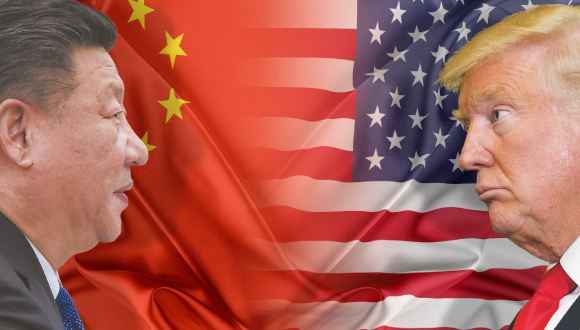Since the crude oil price peaked in April the market has become bearish losing over 20 percent from the US$70 mark it got to. Last week the China-United States trade war which effect is slowing global economy traded down oil with the global benchmark ICE Brent settling for US$57.10 (-3.12 percent). while the United States benchmark. West Texas Intermediate traded at US$51.66 (-3.67 percent) below the US$60 mark.
On Tuesday this week oil prices rallied on reports that the United States has decided to delay the next round of tariffs to be imposed on Chinese goods till December. The WTI Crude oil prices spiked by 4.30 percent to trade at US$57.29 while Brent Crude traded even more by 4.7 percent at US$61.32. resuming its over US$60 per barrel that it had fallen under during the first week of August.
Apart from the forces of demand and supply which could be adduced for bearish or bullish market territories. geopolitical events which effects are believed to be temporary are greatly affecting oil prices. ditto natural risk factors. They are events which futurity is difficult to predict. The escalating trade war between the United States and China that is reaching breaking point may fall into the category of geopolitics. The United States as the biggest oil producer accused China—the biggest oil importer—of severally taking advantage of it and was determined to get even.
The China-United States trade war which started on July 6. 2018 is the economic disagreements that made the two countries impose import restriction on each other to harm each other’s trade. President Donald Trump believes that for 25 years. China was killing the United States with unfair trade deals including stealing intellectual property. The Chinese have accused America of unilateralism and trade protectionism measures in the imposition of increased tariffs to hinder China’s economic development. The Xi Jinping government has told exporters to find new markets and replace American farm goods with imports from Russia. Brazil and other sources.
The unending Sino-American trade dispute is becoming more uncertain with President Donald Trump announcing on Twitter that additional 10 percent tariff will be levied on the remaining US$300 billion of goods effective September 1.
The tariff is now to be delayed until December 15. with the United States taking some of the items on that tariff list off completely. The trade war stratagems adopted on both sides is pummeling exporters on both divides. What does it portend for global oil? Since the August 1. Trump announcement crude oil fell by more than 13 percent.
A slowdown of the global economy is dampening oil demand. leading to a larger-than-expected surplus in crude inventory. China’s economic prospects have pressured prices. Data has shown that growth in the China slowed to 6.2 percent from a year earlier. the weakest pace in at least 27 years. As oil demand slows down from a major consumer like China. it signals a slump in prices.
China’s oil demand growth contributes greatly to global oil demand growth. A quick response to President Trump’s latest threat of more punitive import duties in Sept China weakened its currency the renminbi. RMB or Yuan on August 5. 2019. The devaluation by over 2 percent (around 7 Yuan to 1 U.S. Dollar) by the Central Bank of China may be the breaking point since it was hit by the threat of tariffs. To the Xi government. a weaker Yuan would make Chinese exports cheaper abroad and help to offset Trump’s tariff hikes.
The currency battle made the Trump administration to call China a currency manipulator. Oilprice.com reports that China is very important in the global economic system. But what would have been the direct effect of the Chinese currency devaluation on oil demand? The two main oil benchmarks. the Brent and WTI are traded in U.S. dollars.
A rise in the value of the dollar means the price of crude would drop. It however makes oil more expensive to the rest of the world. A drop in the value of the dollar means the price of crude must rise to have the same worth on the market. Even when the Chinese are not using oil to retaliate on the American tariffs threat. there is a direct effect of the currency battle on oil demand.
The American dollar has an immediate pricing impact on consumers because oil tends to move inversely to the dollar. The dollar-yuan relationship sets the tone for global monetary policy. The threat of a currency war could plunge the global economy. which would be negative for oil demand. The weakening of the yuan puts tremendous pressure on other emerging markets.
Oil prices plunged on Wednesday last week as fears of economic recession rose after a wave of interest rate cuts from around the world. The Central Banks of India. New Zealand and Thailand in quick succession cut interest rates to protect their economies and exports from the fallout from the U.S.-China trade war. The dollar is the world’s reserve currency and a liquid safe haven asset. so capital tends to flow into the dollar in times of turmoil especially when other currencies are depreciating. The dollar tends to see upward pressure in times of upheaval which can be problematic.
 Iran Energy News Oil, Gas, Petrochemical and Energy Field Specialized Channel
Iran Energy News Oil, Gas, Petrochemical and Energy Field Specialized Channel




